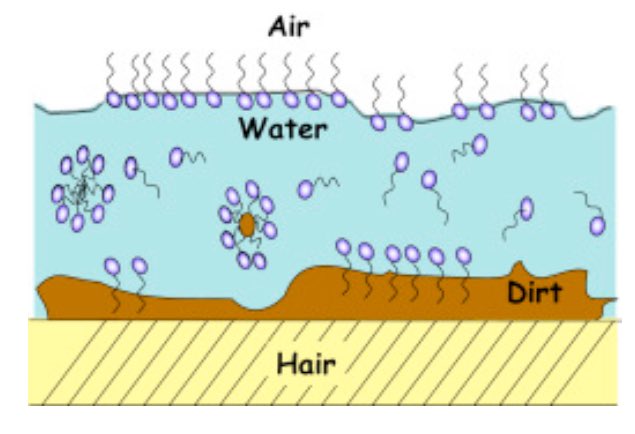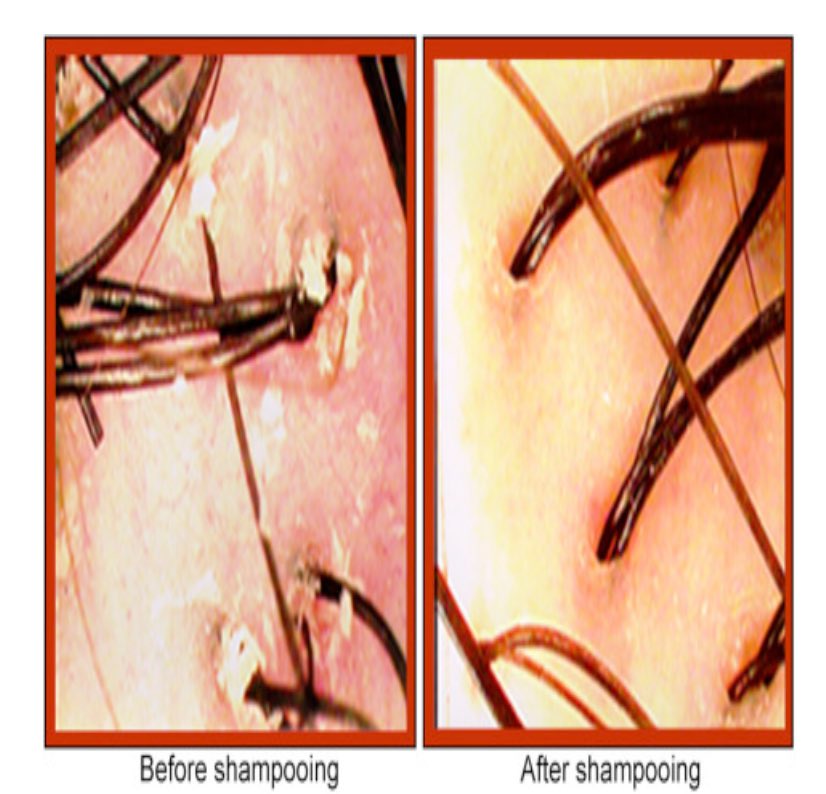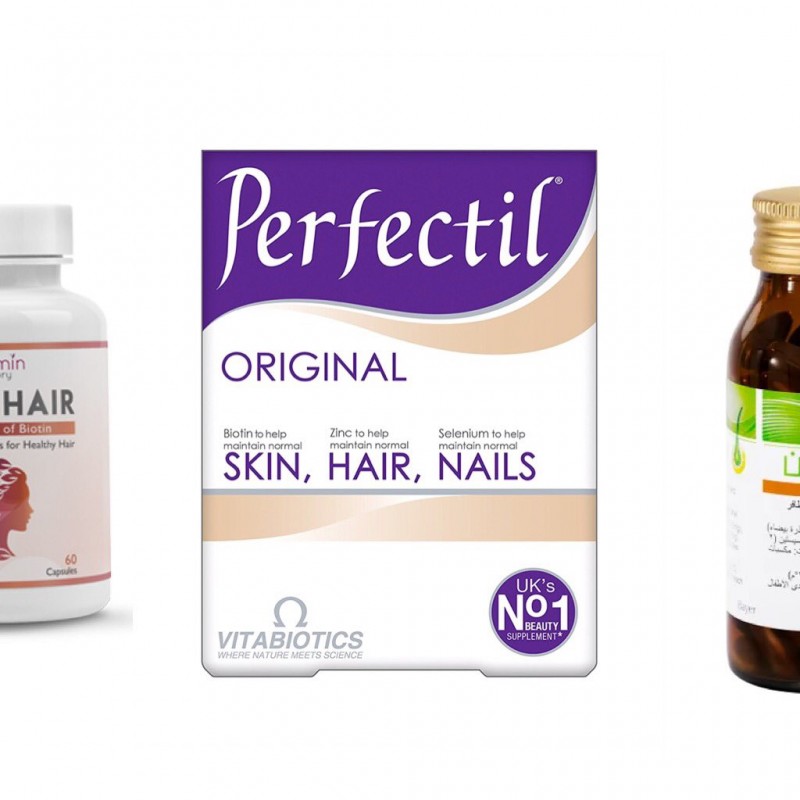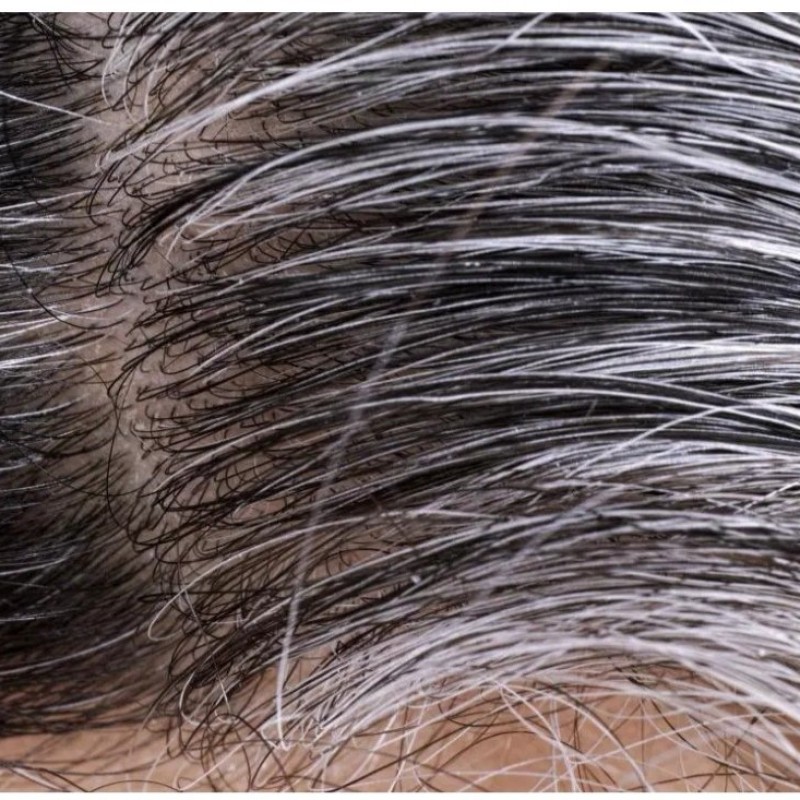The shampoo is not only a scalp cleanser, but it also works to prevent damage to the hair shaft. Many scalp diseases are treated with active ingredients added to shampoo formulations. Whatever the disease (seborrheic dermatitis, alopecia, psoriasis) it is recommended that the hair strands remain beautiful, while maintaining their softness, brilliance and luster
Shampoos usually consist of 10-30 ingredients, but there are products that contain less than 4 ingredients. The products are grouped into: (1) Disinfection agents. (2) Additives that contribute to the stability and comfort of the product (3) Conditioning agents that aim to give smoothness and shine (4) Ingredients to treat specific problems such as dandruff and oily hair.
Water
The main ingredient in all shampoos, it usually makes up about 70-80% of the entire formula. Deionized water, which is specially treated to remove various molecules and ions, is used in shampoos.
Detergents (surfactants)
Surface active ingredients, which means they can interact with the surface. The chemical nature of the surfactant allows it to surround and trap oily substances from surfaces.
One part of the molecule is oil compatible (soluble) while the other is water soluble
When the shampoo is applied to hair or textiles, the oil-soluble part aligns with the oily substances while the water-soluble part aligns with the water layer, giving the shampoo its cleansing power.
Surfactants are derived from compounds known as fatty acids, which are natural substances found in various plant and animal sources. The substances most often used to make the surfactants used in shampoos are extracted from coconut oil, palm kernel oil, and soybean oil.
Some common primary detergents used in shampoos are ammonium lauryl sulfate, sodium lauryl sulfate, and sodium lauryl ether sulfate.
The surfactants pull out the oily dirt on the hair and scalp, then the dirt can be pulled out into the water and washed off easily.

The effect of shampooing can be observed by comparing the image of the scalp under the microscope before and after using the shampoo. After shampooing, the scalp becomes clean and free of oily dirt so that the oil regenerates. This procedure helps with personal hygiene and reduces the chance of scalp inflammation, itching and odor.

Foam boosters
These substances, called alkanolamides, help increase the amount of foam and the size of the bubbles. It is derived from fatty acids and has both water-soluble and oil-soluble properties. Typical substances include lauramide DEA or cocamide DEA
Capacitors
The alkanolamides that make up shampoo foam make the formulas somewhat thicker. However, other substances are also used to increase viscosity, such as methylcellulose, which is derived from vegetable cellulose to make it thicker, and sodium chloride (salt) can also be used.
Conditioning factors
Some substances are also added to shampoos to offset the sometimes harsh effect of surfactants on hair and fabrics. Typical conditioning agents include polymers, silicones, and quaternary agents. Each of these compounds deposits on the surface of the hair and improves its texture, softness, and manageability.
Preservatives
Since the shampoo is made of water and organic compounds, contamination from bacteria and other microbes is possible. Preservatives are added to prevent this growth. Two of the most common preservatives used in shampoos are DMDM Hydantoin and Methylparaben
Special Add-ons
One of the primary factors that influence the purchase of a shampoo is its color and scent. To modify these properties, manufacturers add essential oils, dyes, and natural materials such as plant extracts, natural oils, proteins, and vitamins. Zinc Pyrithione is added to treat dandruff.
Although shampoos are considered safe products, they can cause contact dermatitis. Common allergens in shampoos are: Cocamidopropyl betaine, methylchloroisothiazolinone, the absolute preservatives formaldehyde, propylene glycol, vitamin E, parabens and benzophenone.


